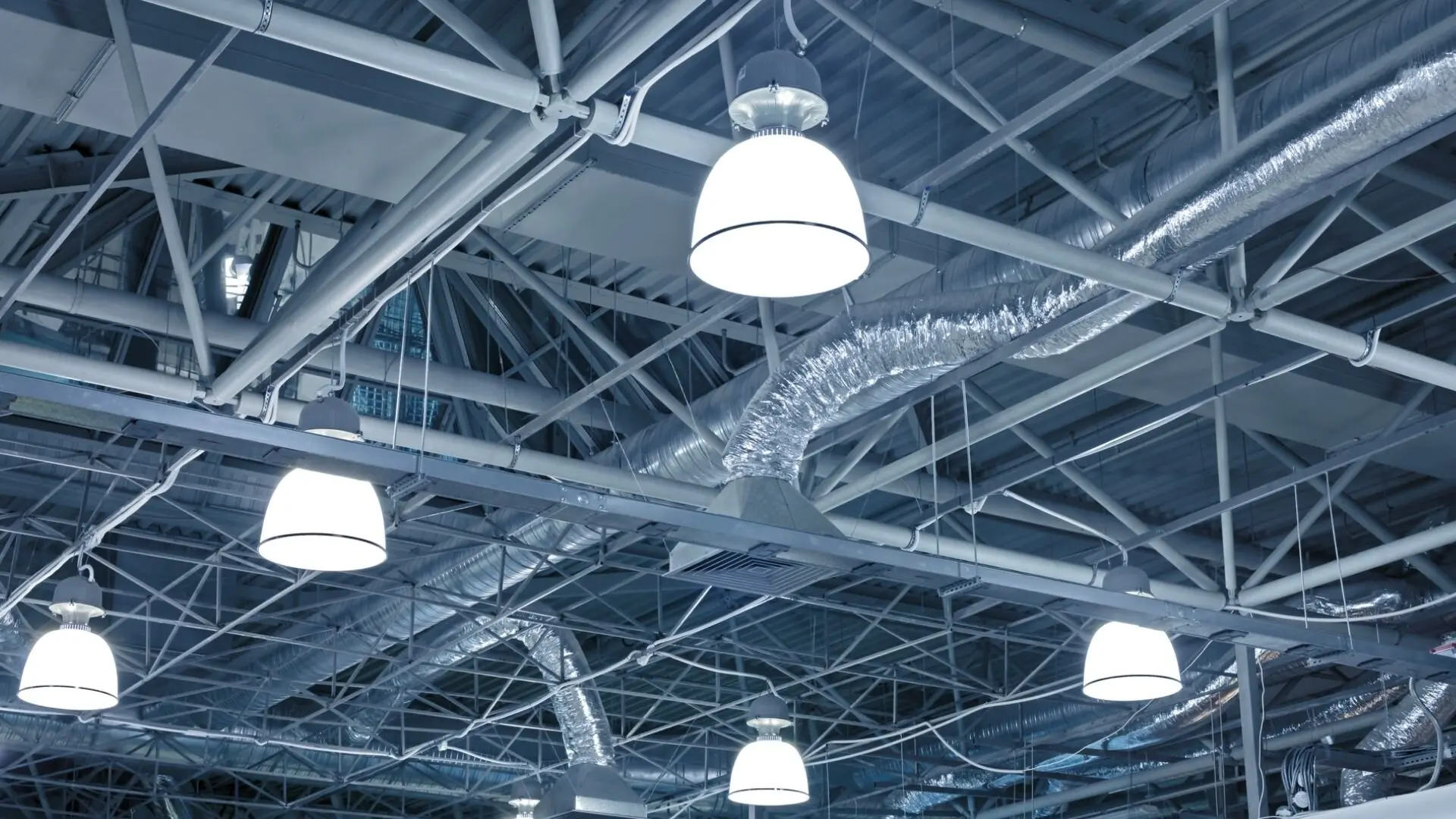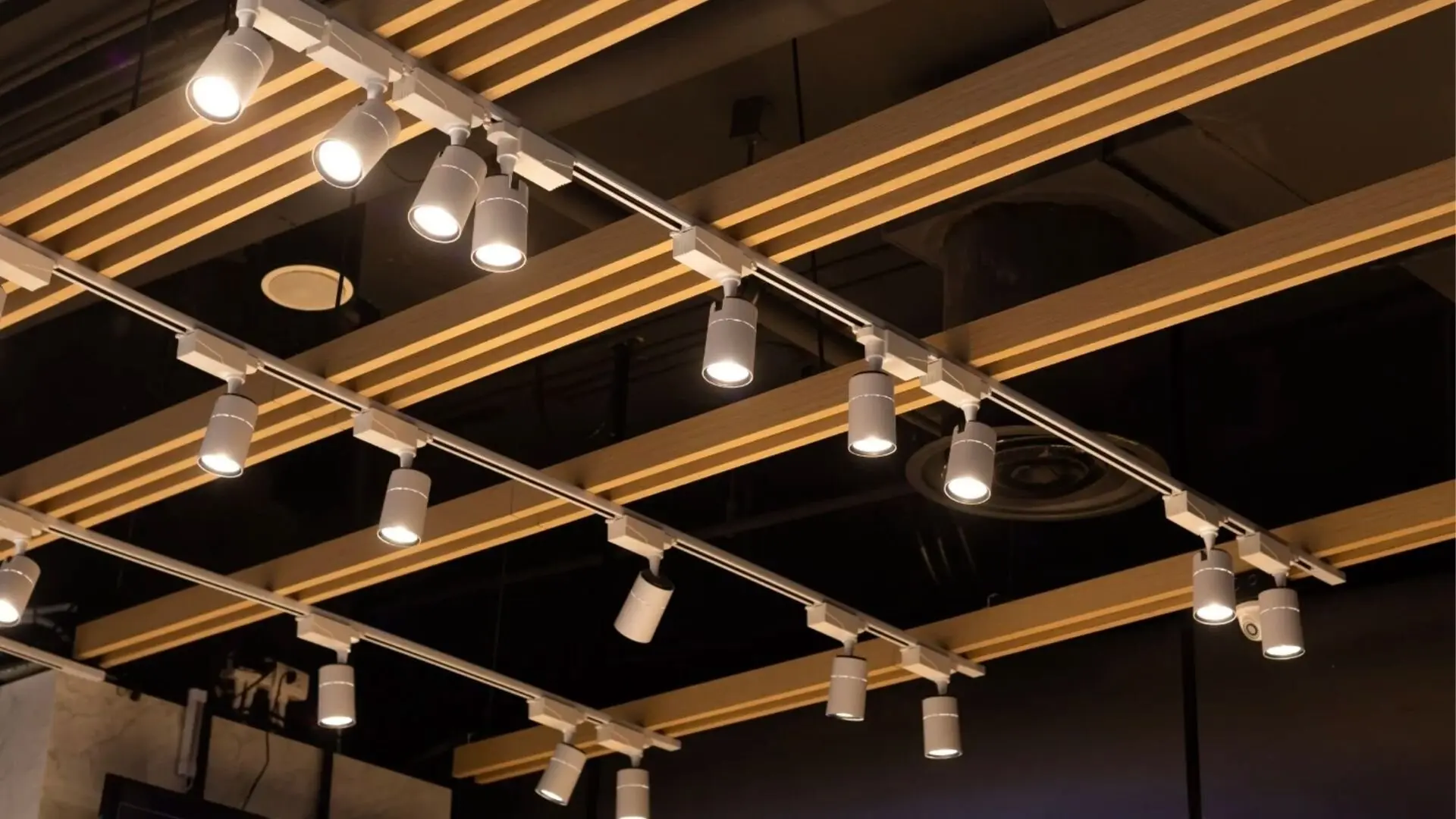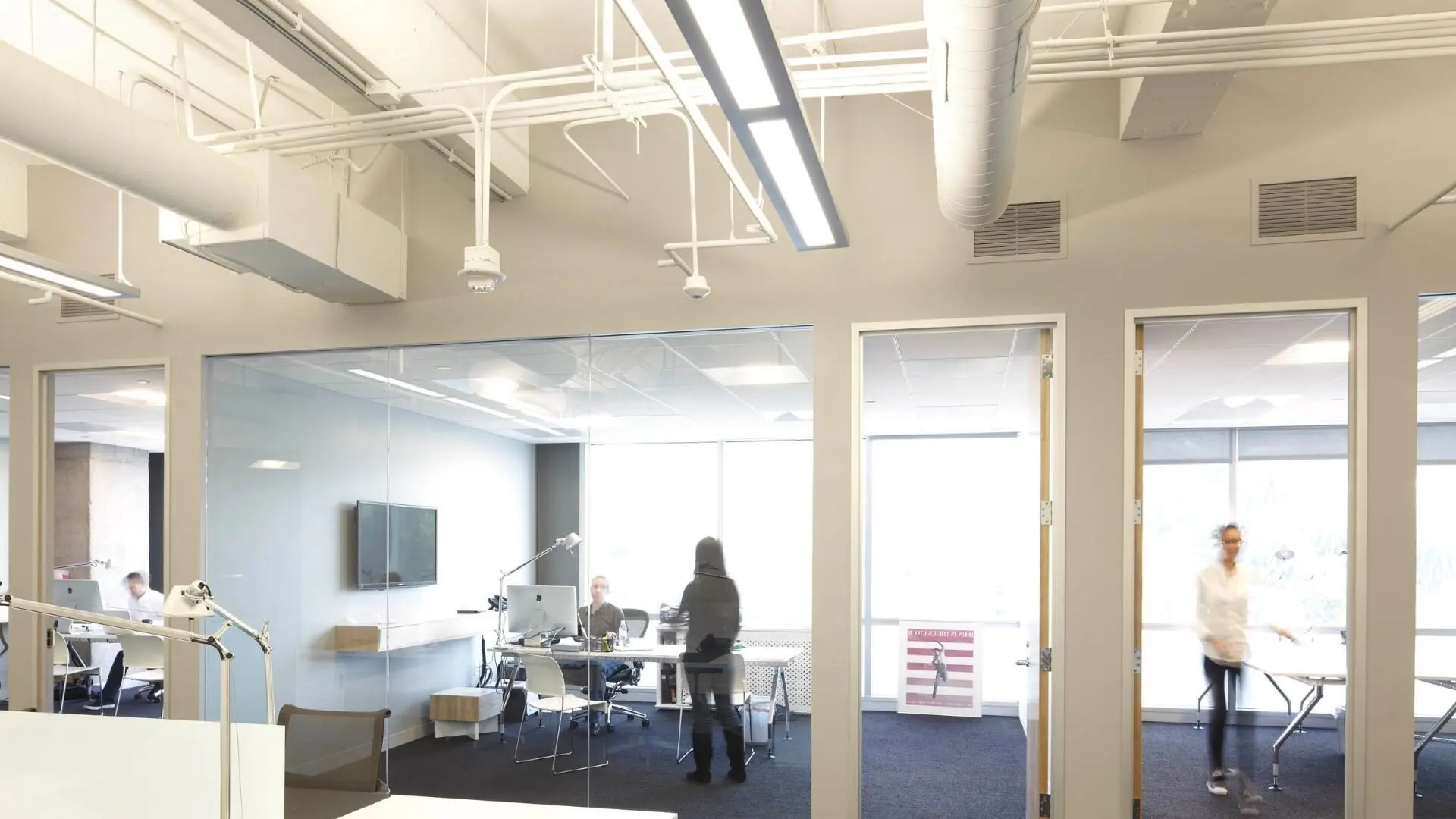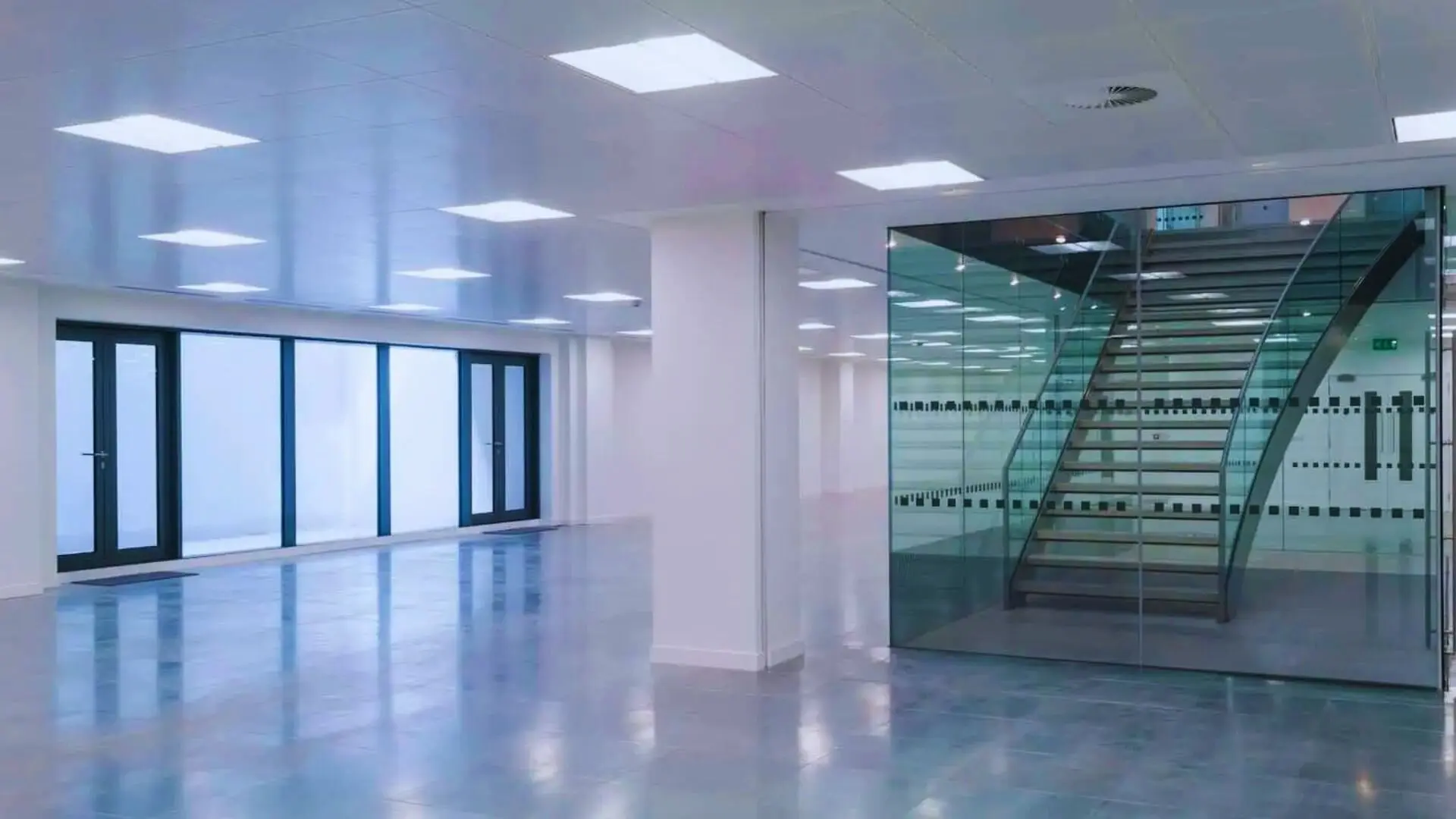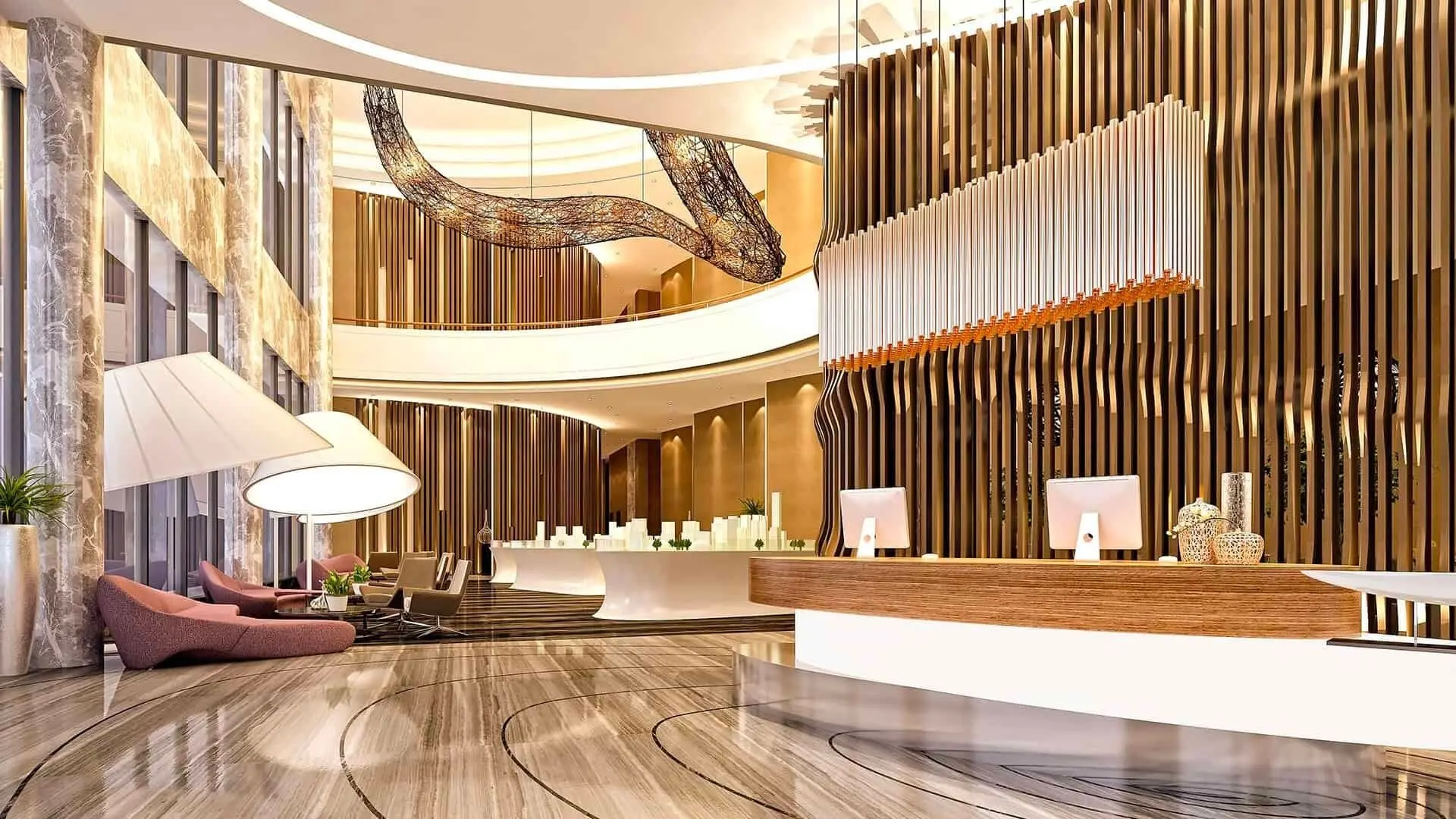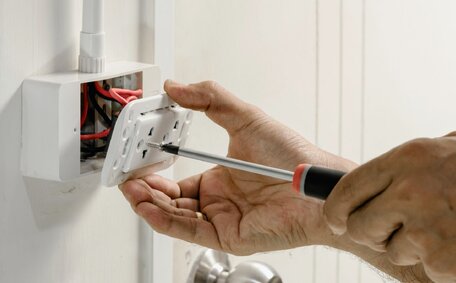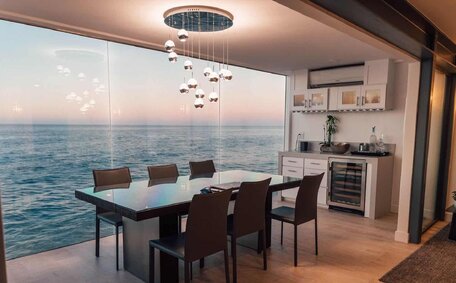![2023 09 Lighting Roof Industrial Lighting Roof Industrial]()
In today’s world, where energy efficiency, aesthetics, and sustainability are key, choosing the right lighting solutions has never been more important. A well-lit workspace can boost productivity, lower energy expenses, and help create a greener future.
This article dives into key considerations for selecting commercial lighting options. We’ll also look at how professional lighting design, innovative systems, and sustainable choices can significantly impact your business.
Whether you’re a pro or just starting with commercial lighting, this guide offers valuable insights and practical advice. By the end, you’ll be ready to make lighting decisions that align with industry standards and help your business succeed.
Benefits of LED Lighting
Regarding commercial lighting, few options shine as brightly as Light Emitting Diodes (LEDs). In this section, we’ll unravel the multitude of advantages that LED lighting brings to businesses. As we delve into these benefits, you’ll gain a deeper understanding of why LEDs have become the go-to choice for modern commercial spaces.
Energy Efficiency
LED lighting is renowned for its exceptional energy efficiency. Compared to traditional incandescent bulbs, LEDs use significantly less electricity to produce the same amount of light. This reduces energy bills and contributes to a greener, more sustainable environment.
Longevity
LED bulbs have an impressive lifespan, up to 25 times longer than incandescent bulbs. This means fewer replacements and reduced maintenance costs for your business. You can consistently use LED lighting to illuminate your workspace over the years, enhancing the overall cost-effectiveness of your lighting system.
Improved Light Quality
LED lighting provides consistent, high-quality illumination. Unlike fluorescent lights, which may flicker or take time to reach full brightness, LEDs offer instant, flicker-free lighting. This creates a more comfortable and productive work environment and reduces eye strain and fatigue among employees.
Environmental Friendliness
LEDs are environmentally friendly due to their lower energy consumption and reduced greenhouse gas emissions. Additionally, LED bulbs do not contain hazardous materials like mercury, which can be found in fluorescent lighting. This makes disposal safer for the environment.
![2023 09 Downlights On Roof Downlights Roof]()
Customisability
LED lighting offers versatile and dynamic solutions. With dimmable options and colour-tuning features, you can adjust the lighting to suit your commercial space’s needs and atmosphere perfectly.
Instant On
LEDs reach full brightness instantly, making them ideal for spaces where immediate illumination is crucial, such as retail stores and offices. There’s no need for lights to warm up or flicker into life.
Durability
LED lights are solid-state lighting resistant to shock, vibrations, and external impacts. Their durability makes them suitable for various applications, including outdoor and industrial settings.
Reduced Heat Emission
Unlike incandescent bulbs that emit significant heat, LEDs remain cool to the touch. This enhances safety and reduces the load on air conditioning systems, contributing to further energy savings.
Factors to Consider When Choosing Lighting
Choosing the right lighting for your commercial space isn’t easy. This choice affects both the ambience and functionality of your workspace. As we navigate these lighting choices, it’s crucial to consider key factors ensuring your solution aligns with your business’s needs and goals.
1. Purpose of the Space
The first consideration should be the purpose of the area you’re lighting—for instance, focused, bright lighting benefits task-oriented areas, such as offices or workstations. Meanwhile, lounges or waiting rooms may require softer, ambient lighting to create a comfortable atmosphere.
2. Occupancy and Usage
Consider how frequently and for how long the space will be occupied. Spaces with high foot traffic or extended hours of use may require lighting solutions that are energy-efficient and durable enough to withstand constant operation.
3. Lighting Design
Lighting design is not just about choosing fixtures; it’s about creating a harmonious and functional lighting environment. Professional lighting design can enhance aesthetics, productivity, and energy efficiency.
![2023 09 Glass Doors Four People Mac Glass Doors People Mac]()
4. Colour Temperature
Warm lighting (2700k-3000K) creates a cosy atmosphere, while cool lighting (4000K above) is more energising. Finding the right balance for your space is essential.
5. Energy Efficiency
Opt for lighting solutions that meet your illumination needs and help reduce your energy consumption and costs.
6. Environmental Impact
If sustainability is a core value for your business, consider environmentally friendly lighting options. LEDs, for example, are energy-efficient and free from hazardous materials like mercury in other lighting technologies.
Exploring Types of Commercial Lighting
The options for commercial lighting are as diverse as the businesses they illuminate. Exploring the various types of commercial lighting can be crucial in ensuring your workspace is well-lit, energy-efficient, and aesthetically pleasing.
Each type offers unique characteristics and benefits. From the warm glow of incandescent bulbs to the energy-efficient brilliance of LED fixtures, the choices abound. Fluorescent lighting offers a balance of efficiency and brightness, while high-intensity discharge (HID) lights are best for large industrial areas.
Don’t forget about the rapidly evolving realm of bright lighting, where automation and control systems are revolutionising how businesses manage their lighting needs. Whether upgrading an existing space or planning a new one, understanding the array of available commercial lighting options will help you make informed decisions that align with your needs and goals.
![2023 09 Black Framed Window Plants Black Framed Window Plants]()
The Integration of Smart Lighting Systems
In today’s rapidly advancing technological landscape, integrating smart lighting systems has emerged as a game-changer for commercial spaces. Smart lighting goes beyond traditional illumination, offering a sophisticated blend of convenience, energy efficiency, and control.
These systems adapt to a space’s and its occupants’ needs in real-time. Whether it’s adjusting the brightness based on natural light levels, motion sensing to conserve energy, or enabling remote control via smartphones and voice commands, smart lighting systems offer unparalleled flexibility and customisation.
![2023 09 Shiny Floor Glass Stairs Shiny Floor Glass Stairs]()
One of the key advantages is the ability to create personalised lighting environments. Businesses can tailor lighting settings to enhance productivity in workspaces, create inviting atmospheres in retail settings, or optimise energy savings in industrial facilities. In addition, these systems often integrate seamlessly with other smart technologies, such as HVAC systems and security cameras, providing a holistic approach to building management.
With sustainability taking center stage for many businesses, smart lighting plays a crucial role in cutting down energy use and carbon footprints. By using occupancy sensors and daylight harvesting, smart lighting only illuminates when necessary, leading to significant energy savings over time. Plus, these systems collect data that provides valuable insights for further improvements and resource management.
Choosing Sustainable and Eco-Friendly Lighting
In an era where sustainability is at the forefront of decision-making, selecting eco-friendly lighting options for commercial spaces has never been more critical. Sustainable lighting reduces energy consumption and minimises environmental impact, contributing to a greener future.
LED (Light-Emitting Diode) lighting is one of the leading choices for eco-conscious businesses. These lights consume significantly less energy than traditional incandescent bulbs, lowering electricity bills and reducing carbon emissions. Moreover, LEDs have a longer lifespan, reducing the frequency of replacements and the waste associated with old bulbs.
Another eco-friendly option is compact fluorescent lamps (CFLs), which are more energy-efficient than incandescent and have a longer lifespan. Furthermore, CFLs contain less harmful substances, making them easier to dispose of responsibly.
![2023 09 Beams Floor Foyer Beams Floor Foyer]()
Natural light, harnessed through well-designed windows and skylights, is an environmentally friendly way to illuminate commercial spaces during daylight hours. Incorporating daylight into your lighting strategy reduces energy usage and enhances the comfort and well-being of occupants.
When selecting sustainable lighting, it’s essential to look for products certifiedby organisations like ENERGY STAR, which adhere to strict energy efficiency and environmental standards. Additionally, consider incorporating lighting controls, such as timers, motion sensors, and dimmers, to optimise energy use further.
Shining a Light on Smart Choices
As we wrap up our comprehensive guide to commercial lighting, we must emphasise the critical role lighting plays in your workspace. From the energy-efficient brilliance of LED lighting to the transformative potential of professional lighting design and the adaptability of intelligent lighting systems, your choices can profoundly impact productivity, energy costs, and the environment.
Remember, lighting illuminates your space and enhances your business’s bottom line. It’s an investment in efficiency, aesthetics, and sustainability. By making informed decisions, you’re brightening your workspace and contributing to a greener future.
If you’re ready to transform your commercial lighting, our Level 2 qualified experts are here to assist you. Whether you have questions, need advice, or want to request a quote, we’re just a call or message away. Let us guide you towards a brighter, more efficient, and sustainable future for your business. Illuminate your workspace and watch your success shine.




